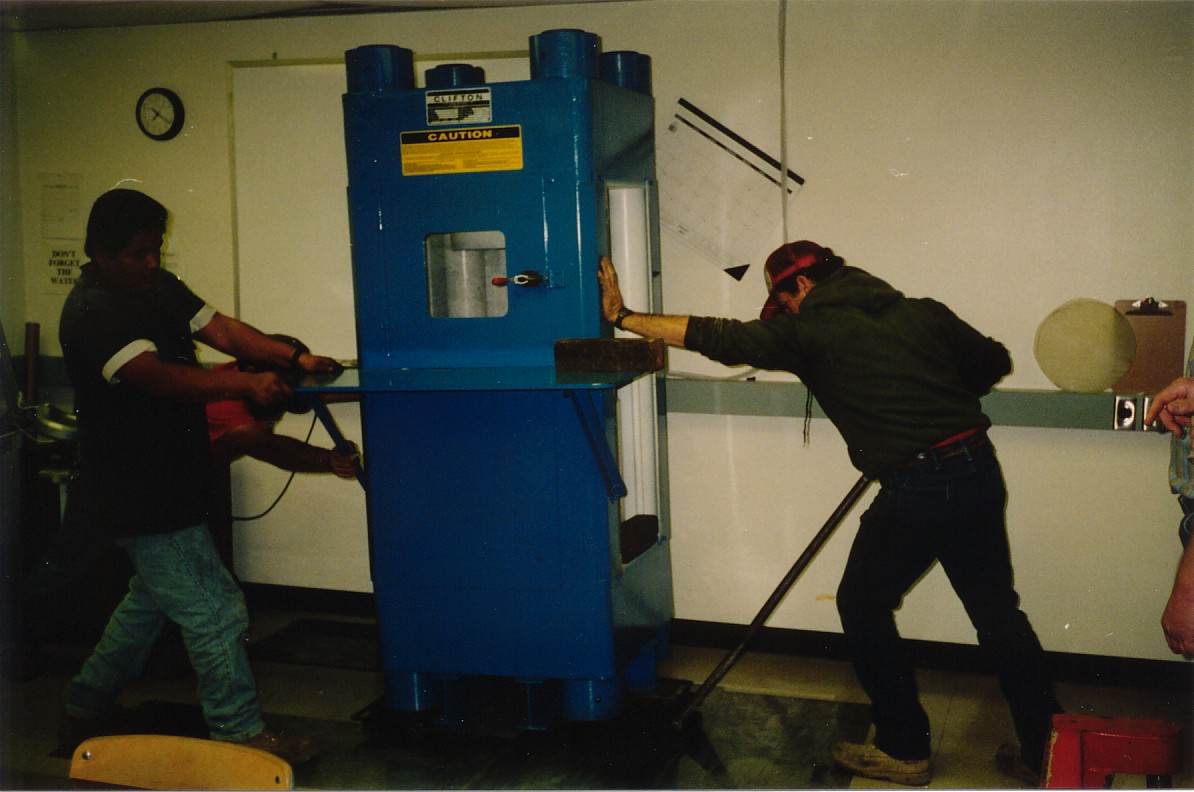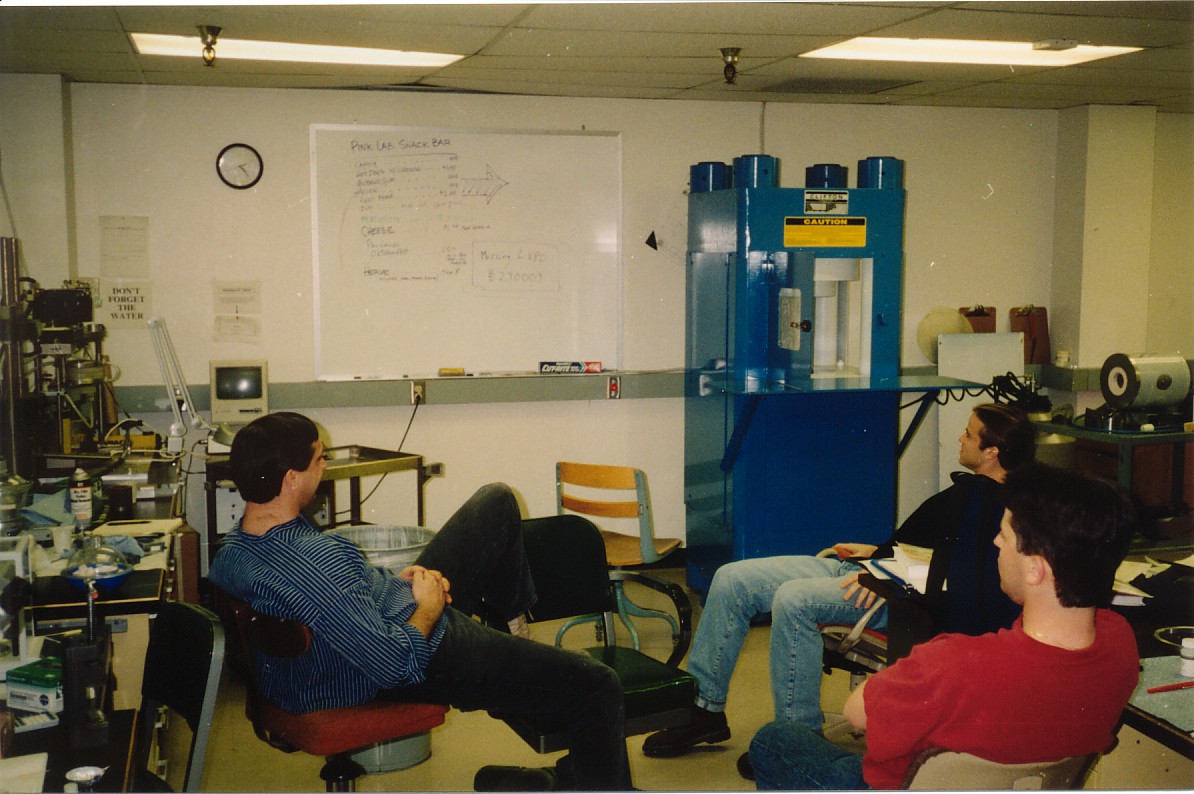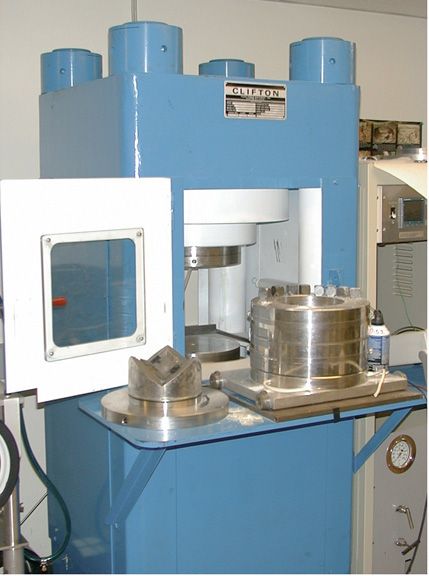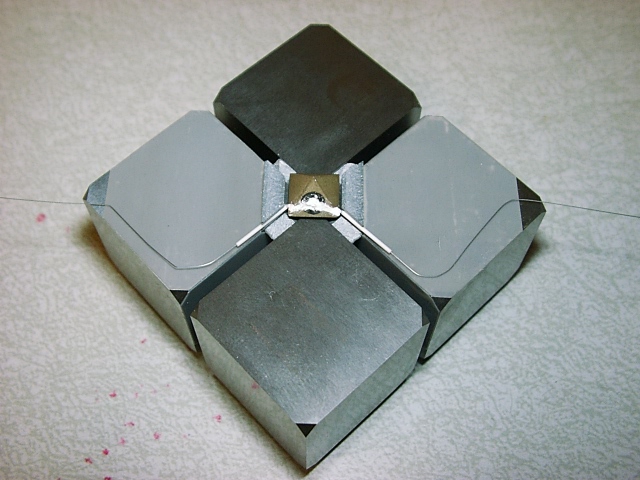

Arizona State University Multianvil Home Page
Kurt Leinenweber, September 2003
ASU has a multi-anvil laboratory, located in the Department of Chemistry, Physical Sciences building basement. Three multi-anvils are currently installed there. In 1994, three 300-ton "workhorse" multi-anvils were designed by John Holloway; construction and commisioning were undertaken by laboratory manager Alison Pawley. Funding for the three multianvils was obtained through the National Science Foundation (NSF) from several grants, including the ASU Materials Research Science and Engineering Center (MRSEC) under the direction of Paul McMillan ("blue" and "green" multianvils); and a grant to James Tyburczy to study the electrical conductivity and impedence of minerals under pressure ("red" multi-anvil).
In 1997, a larger multianvil ("big blue") for working with the highest pressures and largest volumes was purchased with a grant from NSF Earth Sciences Equipment to Holloway, Leinenweber, McMillan, Wolf and Tyburczy. The system was designed and installed by laboratory manager Kurt Leinenweber. The large press frame was purchased from Clifton Fluid Power, inc., in Clifton, New Jersey; and the pressure modules, pumping system and power supplies were home-built by K. Leinenweber.


(Moving-in Day for the Big Blue Multianvil)
 "Big Blue"
multianvil, Arizona State University.
"Big Blue"
multianvil, Arizona State University.
In 1999, the original "blue" multi-anvil was moved to the Royal Institute of London to be installed in Paul McMillan's new laboratory there.
Major pressure hurdles that have been overcome: MgSiO3 perovskite was made in a 3 mm assembly (Fei design) on June 22, 2000. Mg2SiO4 beta phase (14 GPa) is currenly being targeted in a large-volume 8 mm "box" assembly (Nov. 2001); more news to come.
The ASU multi-anvil facility is currently run by Kurt Leinenweber. It is located in the physical sciences D-Wing, room PSD-052, at Arizona State University.

3 mm "Fei-style" cell assembly used to make MgSiO3 perovskite. Carbide cubes (grey), ceramic octahedron (brown), rhenium metal furnace, and two type C thermocouple wires extending from the octahedron are all visible.
Some items of special interest:
Poster for NSF COMPRES site visit, Nov. 14, 2001.
Multi-anvil Web, by the Arizona Alliance